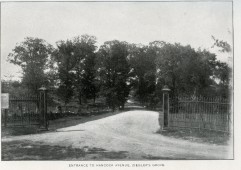Review by Ciarán Dean-Jones For Michigan War Studies Review, July 1, 2016.
Portions of Dean-Jones review:
....In Barksdale’s Charge, Phillip Tucker (PhD, St. Louis Univ.), a
former historian for the US Air Force, reexamines the Battle of
Gettysburg (1–3 July 1863). Southern mythology has traditionally given
Gen. George Pickett’s Charge (3 July) pride of place in its remembrance
of the pivotal battle of the Civil War. Tucker offers a different view:
In truth, Gettysburg was decided not on the
famous third day of the battle, but on the previous after-noon…. [T]he
charge of General William Barksdale and his 1,600-man Mississippi
Brigade … came closer to toppling the Army of the Potomac than any other
Rebel offensive effort of the war…. [I]n one of the great inequities of
American history, Barksdale’s Charge has long remained in the shadow of
“Pickett’s Charge,” thanks largely to the dominance of the Virginia
School of history. (1, 3)
....
Tucker indicts Longstreet and Lee for not supporting Barksdale’s troops.
“Longstreet, who had never wanted to launch the tactical offensive this
afternoon, was not only more pessimistic but out-right defeatist. He
ordered no troops to follow up behind Barksdale” (176). Lee’s
overconfidence in his corps commanders compounded the problem, since he
“failed to closely supervise and manage the offensive effort, especially
in supporting Barksdale’s dramatic breakthrough…. Lee possessed no
strategic reserve to follow-up [sic] on Barksdale’s success, or
any other that might be achieved that day” (176). By contrast, Meade and
his artillery chief Henry Hunt made good use of their reserves during
the Second Corps’ retreat up Cemetery Ridge. “Unfortunately for the
Mississippi Brigade, the Army of the Potomac … benefited from the
availability of a powerful artillery reserve, unlike Lee’s Army, which
had made the fatal error of abolishing its artillery reserve corps just
before invading the North” (213).
....
Barksdale’s Charge tells a tale of immense valor at the brigade level frustrated by the ill-coordinated tactical decisions of division and corps commanders: “while the army’s commander and his top lieutenant had been badly outgeneraled on July 2, the Mississippi Brigade had not been out-fought by any unit on either side” (244). Hood wrote after the war, “Thus it was that the 21st Mississippi Regiment bore the Stars and Bars to the very farthest point reached in the enemy’s line on the bloody field of Gettysburg” (243). Meade wrote in his after-battle report that “Sickles’ unauthorized advance to the Peach Orchard was ‘an error which nearly proved fatal in the battle’” (259). Phillip Tucker has demonstrated in detail the truth of these judgments.
Barksdale’s Charge tells a tale of immense valor at the brigade level frustrated by the ill-coordinated tactical decisions of division and corps commanders: “while the army’s commander and his top lieutenant had been badly outgeneraled on July 2, the Mississippi Brigade had not been out-fought by any unit on either side” (244). Hood wrote after the war, “Thus it was that the 21st Mississippi Regiment bore the Stars and Bars to the very farthest point reached in the enemy’s line on the bloody field of Gettysburg” (243). Meade wrote in his after-battle report that “Sickles’ unauthorized advance to the Peach Orchard was ‘an error which nearly proved fatal in the battle’” (259). Phillip Tucker has demonstrated in detail the truth of these judgments.
The entire book review is at: Michigan War Studies Review, July 1, 2016







